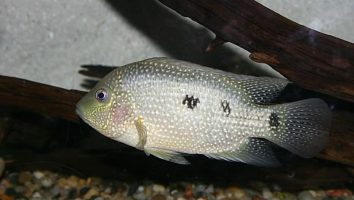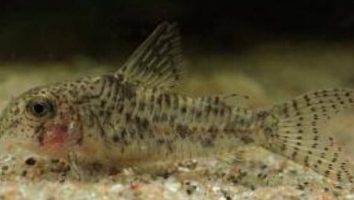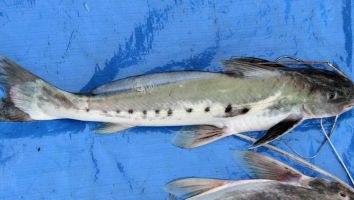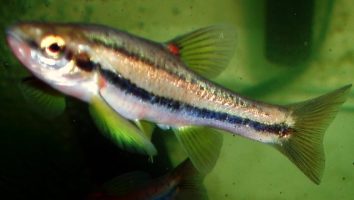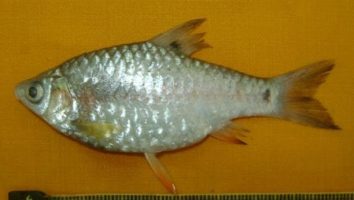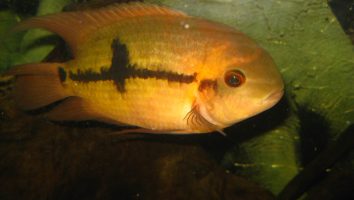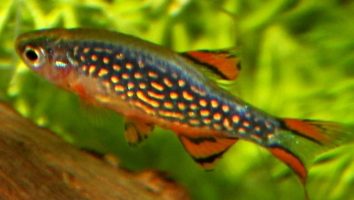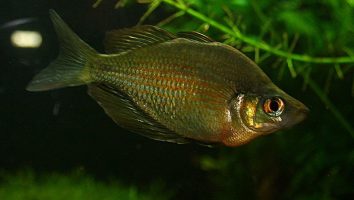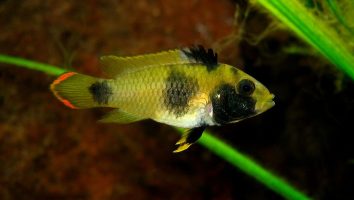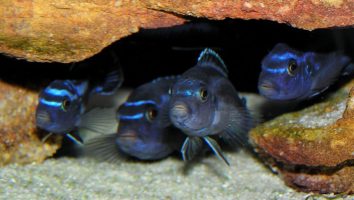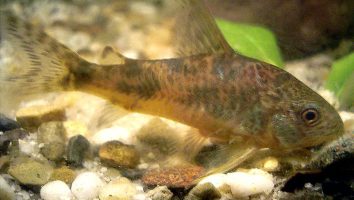The electric blue cichlid is a beautiful and popular freshwater fish that’s perfect for beginner aquarists.
They’re easy to care for, relatively peaceful, and make a great addition to any community tank.
But like all animals, they have specific needs that must be met in order to stay healthy and thrive.
In this guide, we’ll teach you everything you need to know about electric blue cichlid care. From diet and tank mates, to breeding and common problems.
Table of contents
Species overview
The electric blue cichlid (scientific name: Sciaenochromis fryeri) is a freshwater fish that’s native to the waters of Lake Malawi in Africa.
They are a popular choice for many aquarium enthusiasts due to their vibrant blue coloration.
Electric blue cichlids are relatively peaceful fish but can be quite aggressive toward their own species. This is something to keep in mind if you’re considering keeping more than one of them in the same tank.
These fish are omnivores and will eat a wide variety of foods. In the wild, their diet consists of algae, crustaceans, and small insects.
Appearance
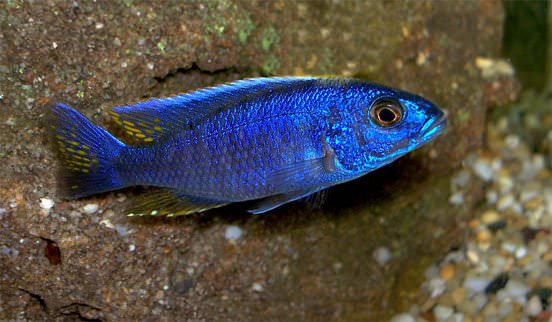
The first thing you’ll notice about this dazzling freshwater fish is their color. As the name suggests, they’re a beautiful electric blue all over their bodies.
This color can range from a light powder blue to a deep navy. It really depends on the fish and their location/diet.
Their color is so intense that it almost looks like they’re glowing.
This color is solid all over their bodies with a few darker spots near the dorsal fin. The dorsal fin is large and triangle-shaped. It starts about halfway back on their bodies and extends all the way to the end of their long caudal peduncle.
The anal fin is much smaller and shorter than the dorsal fin. It starts a little bit closer to the head and doesn’t extend back as far.
Their caudal fin is forked and large. It’s almost as long as their bodies from top to bottom!
Their pectoral fins are large and somewhat rounded. They start close to the head and extend out to the side.
Electric blue cichlids have a very distinct face. They have large eyes that sit high up on their heads. their mouths are downturned and their lips are thick.
Lifespan
The electric blue cichlid has a lifespan of about 10 years. However, this fish is known to live much longer in captivity than in the wild.
This is likely due to the fact that these fish are very sensitive to water conditions. In the wild, they might not have the water quality that they need to thrive.
In captivity, however, you can control the water conditions and provide them with everything they need. This, combined with a good diet, can help them live a long and healthy life.
Size
The electric blue cichlid is a small fish, only reaching about 4-5 inches in length when fully grown.
Tank
Tank Size
The recommended tank size for electric blue cichlids is at least 50 gallons. If you want to keep more than one fish, you should add an additional 20 gallons of space for each additional fish.
Electric blue cichlids are relatively peaceful fish but they are known to be somewhat territorial. They need plenty of space to establish their own territory and to avoid conflict with other fish.
Water Parameters
The electric blue cichlid is an African cichlid that does best in neutral to slightly alkaline water. In the wild, these cichlids are found in the waters of Lake Malawi.
To recreate these water conditions in your home aquarium, you’ll need to maintain a pH level between 7.5 and 8.5. The ideal water temperature for electric blue cichlids is between 75 and 80 degrees Fahrenheit.
Water hardness is not as critical for this cichlid, but you should aim for a hardness level between 10 and 20 dGH.
- Water Temperature: 75 to 80 degrees Fahrenheit
- pH Levels: 7.5 to 8.5
- Water Hardness: 10 to 20 dGH
- Alkalinity Levels: Not as critical
What To Put In Their Tank
The electric blue cichlid is a beautiful freshwater fish that is relatively easy to care for. When it comes to setting up their tank, there are a few things you’ll need to take into consideration.
The size of your tank is going to be the most important factor. These fish can grow to be around 8 inches in length, so you’ll need at least a 75-gallon tank to house them comfortably.
The substrate you use is also important. We recommend a sand substrate since it’s softer on their delicate fins. Gravel can also be used, but avoid anything that’s too small or sharp.
As for decorations, these fish like to have a lot of places to hide. Driftwood, rocks, and caves are all great options. Just make sure there are enough hiding spots for all the fish in your tank.
Plants are a bit of a mixed bag with electric blue cichlids. Some aquarists have success keeping them in a planted tank, but others find that the cichlids uproot the plants. If you want to give it a shot, go for tough plants that can withstand a little abuse (like Java fern or hornwort).
Common Diseases
The electric blue cichlid is a species that is relatively resistant to disease. However, this doesn’t mean that they can’t get sick.
The most common illnesses that affect this species are the usual freshwater culprits. This includes things like ich, parasites, and fungal infections.
The best way to prevent your electric blue cichlid from getting sick is to maintain a clean and stable habitat. This means regular water changes, filtration, and keeping an eye on the water parameters.
If you notice anything out of the ordinary with your fish (white spots, changes in behavior, etc.) then it’s important to act fast. The sooner you catch and treat a disease, the higher the chance is that your fish will make a full recovery.
Behavior & Temperament
The electric blue cichlid is a beautiful fish that is known for being relatively peaceful. They are not as shy as some other cichlid species and they do not tend to be as aggressive.
They are curious fish though and they will often investigate their tank mates and their surroundings. They are also known to be good jumpers, so it is important to have a lid on their tank.
Electric blue cichlid in a tank
These fish are also known to be good parents. If you have a breeding pair, they will work together to care for their young. The female will lay the eggs and the male will guard them.
In general, electric blue cichlids are good community fish. They do best when they are kept with other peaceful fish. They can also be kept with other cichlids, but it is best to do your research first to make sure that they are compatible.
Tank Mates
The electric blue cichlid is a beautiful fish that’s perfect for the intermediate aquarist. They’re not too difficult to care for, but they can be aggressive towards tank mates.
This is especially true if the tank is too small. Cichlids are territorial by nature, and the electric blue cichlid is no exception.
To offset this aggression, it’s important to choose the right tank mates. The best electric blue cichlid tank mates are those that are similar in size and temperament.
Some compatible species include:
- Convict Cichlid
- Firemouth Cichlid
- Green Terror Cichlid
- Jack Dempsey Cichlid
- Oscar Cichlid
- Plecostomus
- Texas Cichlid
- Jewel Cichlid
Breeding
The electric blue cichlid is a beautiful fish that is also fairly easy to breed in captivity. These fish are mouthbrooders, which means that the female will carry the eggs and fry in her mouth until they are ready to be released.
To start, you will need to set up a breeding tank. It should be at least 50 gallons and have a sandy bottom. Then, add some rocks and plants for hiding places.
The water should have a pH of around 7.5 and a temperature between 75 and 80 degrees Fahrenheit.
When ready, add one male and two or three females to the tank. The male will usually be the larger fish with more color.
Once the fish have acclimated, you can start to feed them live foods. This will help to trigger spawning.
The female will lay her eggs on a flat surface, such as a rock. Then, the male will fertilize them. After that, the female will pick up the eggs in her mouth and hold them there until they hatch.
This process takes about three weeks. Once the fry are released, they will be able to fend for themselves. Feed them live foods and watch them grow!
Conclusion
The electric blue cichlid is a beautiful fish that is perfect for anyone who wants to add a little bit of color to their tank. They’re also relatively easy to care for, which is always a bonus.
The only downside to this fish is that they can be a little bit aggressive. However, as long as you keep an eye on them and provide them with plenty of space, they should do just fine.
Overall, we think the electric blue cichlid is a great choice for anyone who is looking for a new fish to add to their tank.

